Awesome Seonunsa Temple
in Gochang County
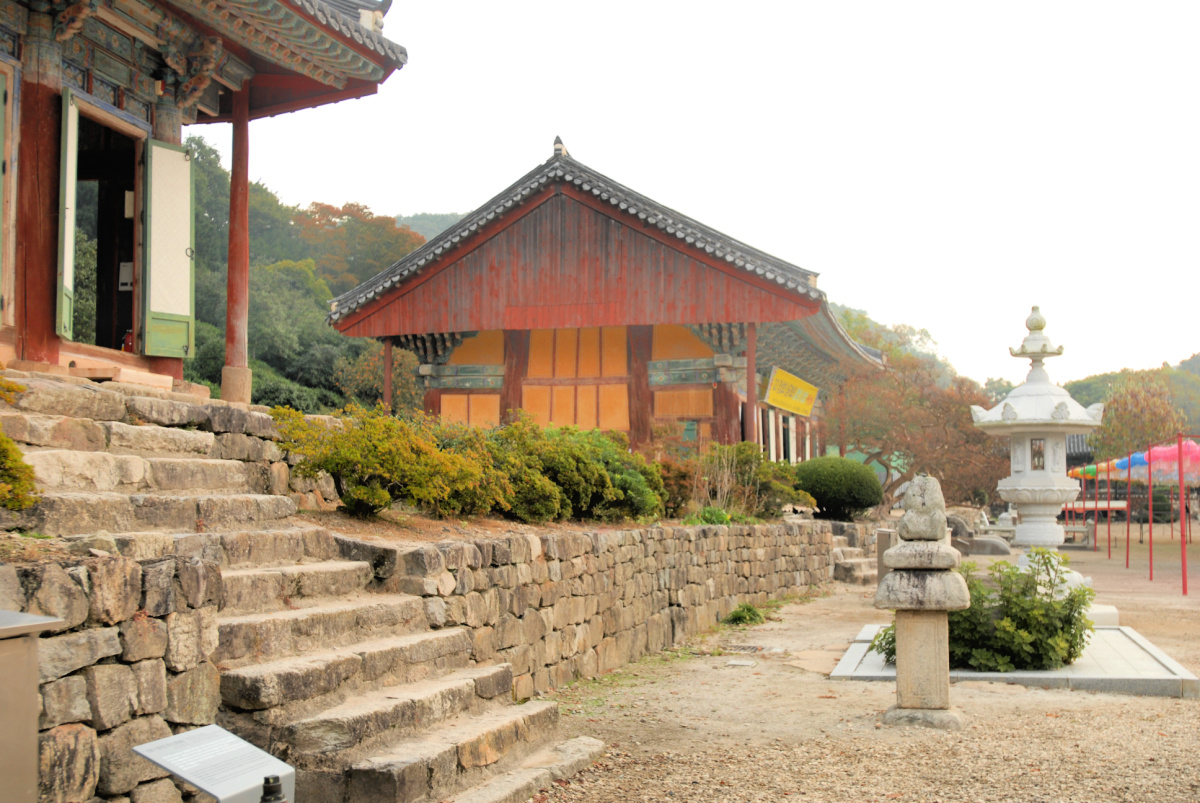 Temple halls and stone artifacts of Seonunsa Temple in Gochang
Temple halls and stone artifacts of Seonunsa Temple in GochangSeonunsa Temple in Gochang
Seonunsa Temple (선운사) is a renowned Zen Buddhist temple in the picturesque North Jeolla Province of South Korea.
With its rich history, awe-inspiring architecture, and scenic surroundings, Seonunsa Temple is a must-visit destination for anyone interested in exploring the country's cultural and religious heritage.
In this article, we'll examine the temple's fascinating history, features, and attractions, which make it a popular tourist spot in South Korea.
Historical Background
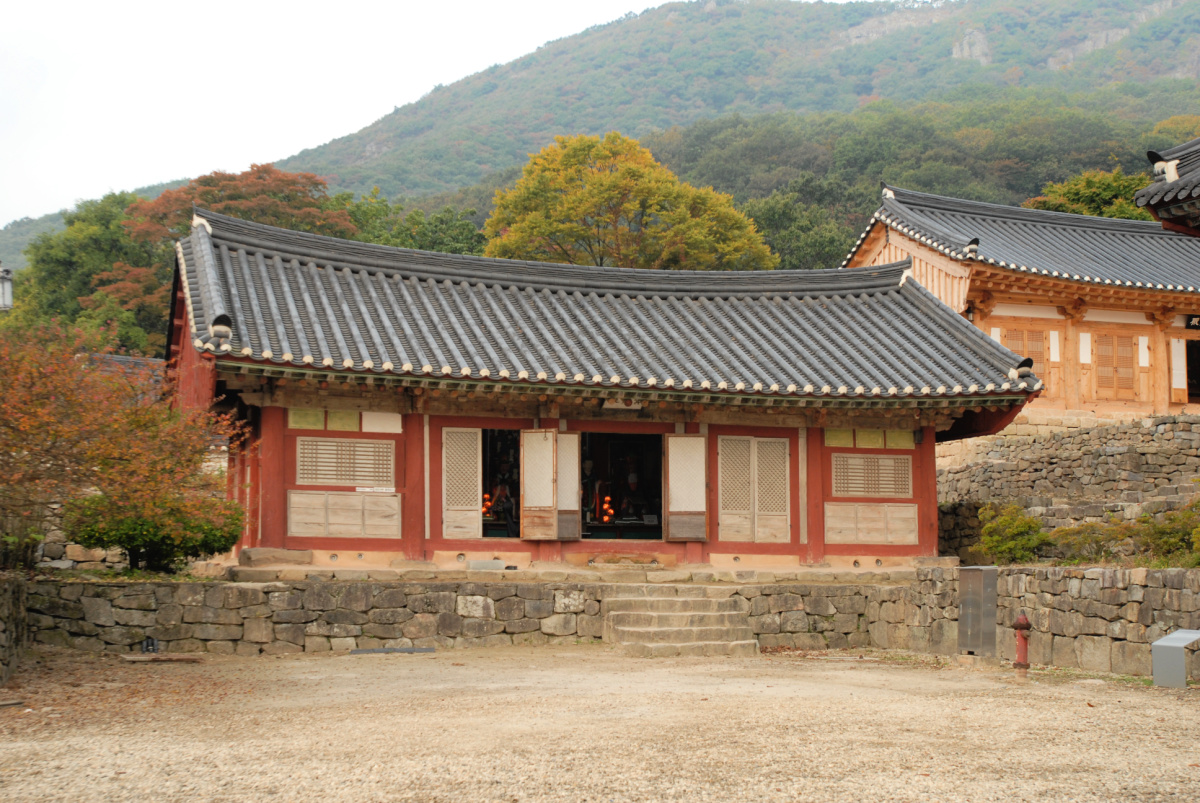 Seonunsa Temple
Seonunsa TempleSeonunsa Temple is located in Gochang, a county in southern South Korea. The temple was originally built by Seon Master Geomdan in 577 AD during the reign of King Jinheung of Silla (534–576; reign 540–576).
The temple was initially called "Seolimsa" and was later renamed "Seonunsa" during the Goryeo Dynasty. The temple was destroyed several times during its long history.
However, it was always rebuilt and is still standing today as a testament to the enduring spirit of Buddhism in South Korea.
Over the centuries, Seonunsa has become a symbol of South Korean Buddhism, attracting countless visitors from around the world who come to pay their respects to the temple's rich cultural and spiritual heritage.
Legends
Several legends surround its establishment. One story recounts a large pond once inhabited by dragons at the temple's current location.
Venerable Geomdan filled the pond with rocks to drive away the dragons. As an eye disease spread through the village, the monk promised healing to those who poured a bag of charcoal into the pond.
The temple was named Seonun (禪雲; literally "Seon clouds") to symbolize cultivating Seon (Zen) practice amidst the clouds.
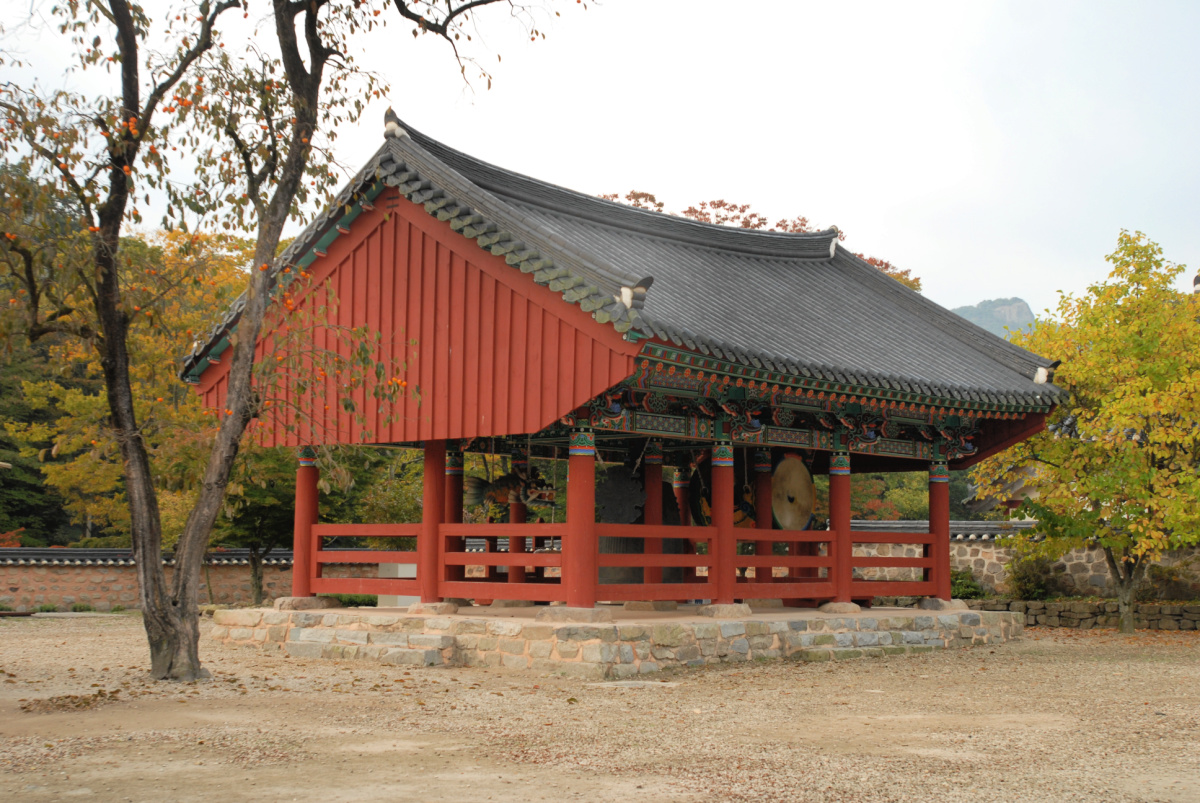 The bell pavilion of Seonunsa Temple in Gochang
The bell pavilion of Seonunsa Temple in GochangRoyal Connection
According to the Seonunsa sajeokgi (Seonunsa Temple Records), King Jinheung of the Silla Dynasty abdicated the throne and established Seonunsa in 577 AD.
The Seonunsa sajeokgi is a historical record that documents the establishment and development of Seonunsa. It is believed to have been written by the monks who lived at the temple over the centuries.
Legends associated with Seonunsa mention two hermitages, Jungae-am and Dosol-am. Jungae-am is said to have been founded by the famous monk Wonhyo, who is considered one of the most influential figures in the history of Korean Buddhism.
Dosol-am, on the other hand, is associated with the Silla Dynasty general Kim Yushin, who is known for his role in the unification of the Korean peninsula.
While the legends associated with Seonunsa are fascinating, their historical accuracy remains to be determined.
However, the temple itself is a magnificent example of Korean Buddhist architecture. It attracts visitors from all over the world who come to admire its beauty and soak up its peaceful atmosphere.
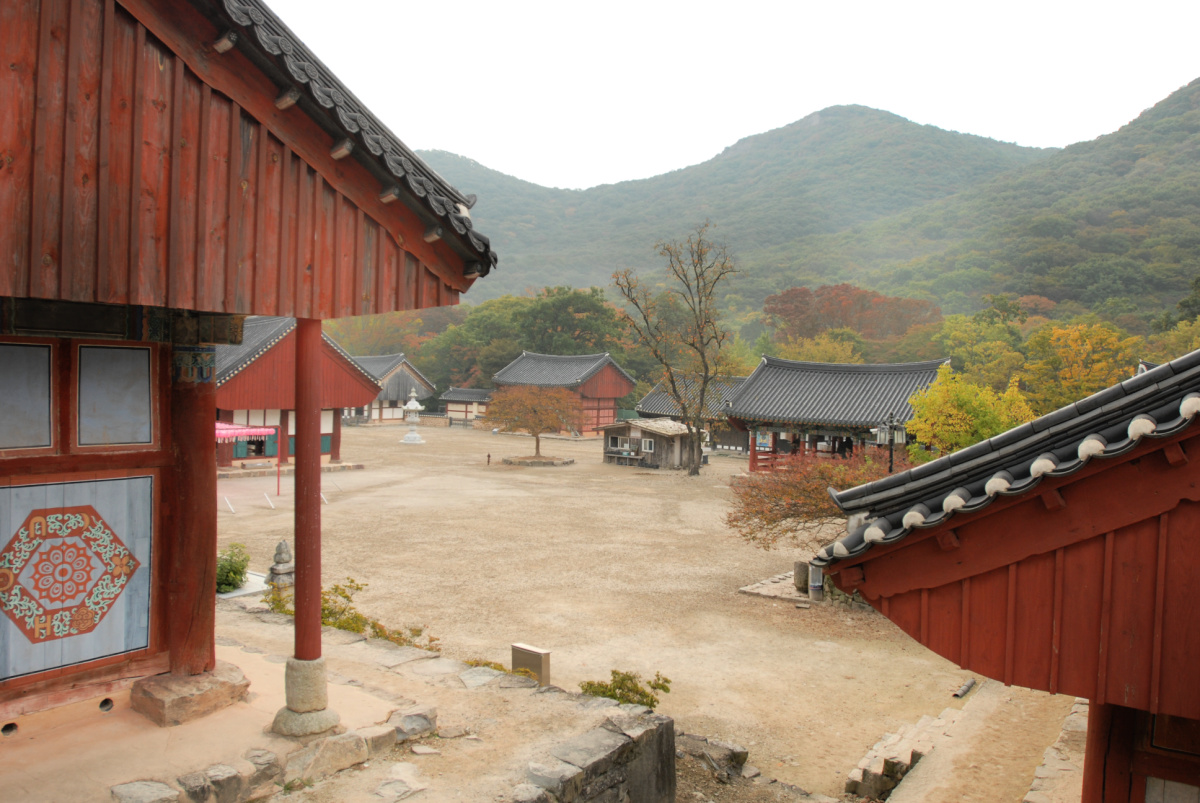 Mountain view in the background of Seonunsa Temple in Gochang
Mountain view in the background of Seonunsa Temple in GochangReconstruction of Seonunsa Temple
The temple is an ancient and sacred site that dates back to the Three Kingdoms period (57 BCE – 668 CE), and it has undergone several reconstructions throughout its history.
The first reconstruction of Seonunsa Temple took place in 1318 by Seon Master Hyojeong. However, it was destroyed during the Japanese invasion in the late 16th century.
The temple was rebuilt in 1614 by Seong Seok-jo, the governor of Mujang County at the time. The reconstruction efforts took approximately five years to complete.
The temple is a popular site for visitors and pilgrims alike, and it offers a serene and peaceful atmosphere ideal for meditation and reflection.
The area surrounding Seonunsa is also known for its beautiful natural scenery, including the nearby Dosolsan Mountain, which offers breathtaking views of the surrounding landscape.
Visitors to Seonunsa can explore the temple complex's various halls, shrines, and pagodas. They can also participate in traditional Buddhist practices such as meditation, chanting, and prayer.
The temple also hosts numerous cultural events and festivals throughout the year, including the Seonunsa Lotus Lantern Festival, which takes place every April.
Attractions
Seonunsa Temple is home to several precious state-designated heritage items that will leave you in awe.
The Great Main Buddha Hall is a majestic structure that houses a giant statue of Buddha, and it is considered one of the main attractions of the site.
The Three-story Stone Pagoda is an ancient pagoda made of stone and is believed to have been built during the Silla Dynasty.
The wooden seated bodhisattva is an impressive statue of a bodhisattva made of wood, and it is known for its intricate details and craftsmanship.
Finally, the Five-story Stone Pagoda is a towering pagoda constructed from stone, and it is believed to be one of the oldest and most significant structures on the site.
These precious artifacts are a testament to the rich cultural heritage of this historic temple and serve as a reminder of its importance as a spiritual and cultural landmark.
Natural Monuments
Seonunsa is responsible for managing and protecting three natural sites designated as monuments. Check them out...
The Forest of Common Camellias (Natural Monument No. 184) is a beautiful forest located in a temple in South Korea. The 400-year-old Camellia tree forest planted in the 17th century is breathtaking.
The Jangsasong Pine Tree (Natural Monument No. 354) is a 500-year-old tree in a quiet village near Mt. Seorak. This Pine tree has been a symbol of the village for centuries and is a popular tourist destination.
Songak Ivy (Natural Monument No. 367) is a beautiful ivy that has been growing on the walls of the Songak Fortress for over 500 years. It is a must-see natural monument.
The 500-year-old Camellia Forest is located behind a temple in South Korea. This forest blooms around the end of April, and visitors can witness the beautiful view of the blooming Camellia trees.
Hiking Trails in South Korea lead to outlying hermitages, such as Seoksang-am. These trails are perfect for those who want to enjoy nature and explore the beautiful scenery.
Enlightening Templestay Program
Seonunsa Temple is a beautiful and peaceful temple located in the heart of the forest. It offers a delightful Templestay program called "Resting Deep in the Forest." This program is designed for those who seek to experience the tranquility and spirituality of a Buddhist temple while enjoying the natural beauty of the surrounding forest.
The program is designed to offer guests a complete experience of temple life. It starts with an arrival and check-in process, followed by an orientation session where the guests are introduced to the temple's history and traditions. The guests then tour the temple to explore its architecture and art.
After the tour, the guests are treated to a delicious dinner prepared by the temple's chefs. They can then participate in an optional evening Buddhist chant, a soothing experience.
The highlight of the program is the tea ceremony with a monk. This is a unique opportunity for guests to learn about the tea ceremony and its significance in Buddhist culture. The monk will explain the process of preparing tea, and guests can enjoy a cup while chatting with the monk.
The guests have free time to explore the temple grounds, meditate, or relax before retiring for the night. The sleeping arrangements are simple but comfortable, with traditional Korean bedding provided.
Guests can wake up early and participate in the optional early morning Buddhist ceremony. This is a beautiful and serene experience, with the monks' chanting creating a peaceful atmosphere.
After the ceremony, the guests are treated to a hearty breakfast, a traditional Korean meal. The guests can then hike to the neighboring Dosolam Hermitage, a beautiful and scenic spot.
Finally, the guests check out and depart, feeling refreshed and rejuvenated after their stay at the temple. This schedule is subject to change depending on the season and weather conditions.
Seonunsa Temple, nestled among verdant hills, invites visitors to experience its rich history, serene surroundings, and spiritual significance. 🌿🏯🙏
Getting to Seonunsa Temple in Gochang
Seonunsa Temple (선운사) is a serene Zen Buddhist temple nestled on the slopes of Dosolsan in Asan-myeon, Gochang County, near the Yellow Sea coast in western Jeollabuk-do province. If you're planning a visit, here's how to get there...
From Gochang Intercity Bus Terminal:
1. A direct bus to Seonunsa Temple departs from the Gochang Intercity Bus Terminal eight times daily.
2. You can also catch a bus to Seonunsa Temple from Gwangju. Board a bus from the U-Square Bus Terminal, which operates four times daily.
Address: Seonunsa Temple is located at 250 Seonunsa-ro, Asan-myeon, Gochang-gun, 56452.
For inquiries, you can contact them at Tel: 063-561-1422.
Whether you seek spiritual reflection, cultural exploration, or a peaceful escape, Seonunsa Temple awaits you amidst the forested beauty of Jeollabuk-do. 🌿🏯🙏.
Links & Sources:
- https://en.wikipedia.org/wiki/Seonunsa
- https://www.lonelyplanet.com/south-korea/jeollabuk-do/seonun-sa/
- https://bing.com/search?q=Seonunsa+Temple+historical+background+features+attractions+North+Jeolla+Province
- https://seonunsa.org/
- Home
- Temples in South Korea
- Seonunsa Temple in Gochang
Get Exciting Activities
Book one of our exciting activities today to experience the thrill of a lifetime! Take advantage of this opportunity and secure your spot in advance.
Hotel Map Guide
Find your affordable, accessible, and comfortable hotel in Seoul at Agoda.Com. See the hotel map below...
Hotel Booking Guide
Find affordable and amazing hotels on Agoda.com using the search box below. Book now to enjoy great discounts and save!
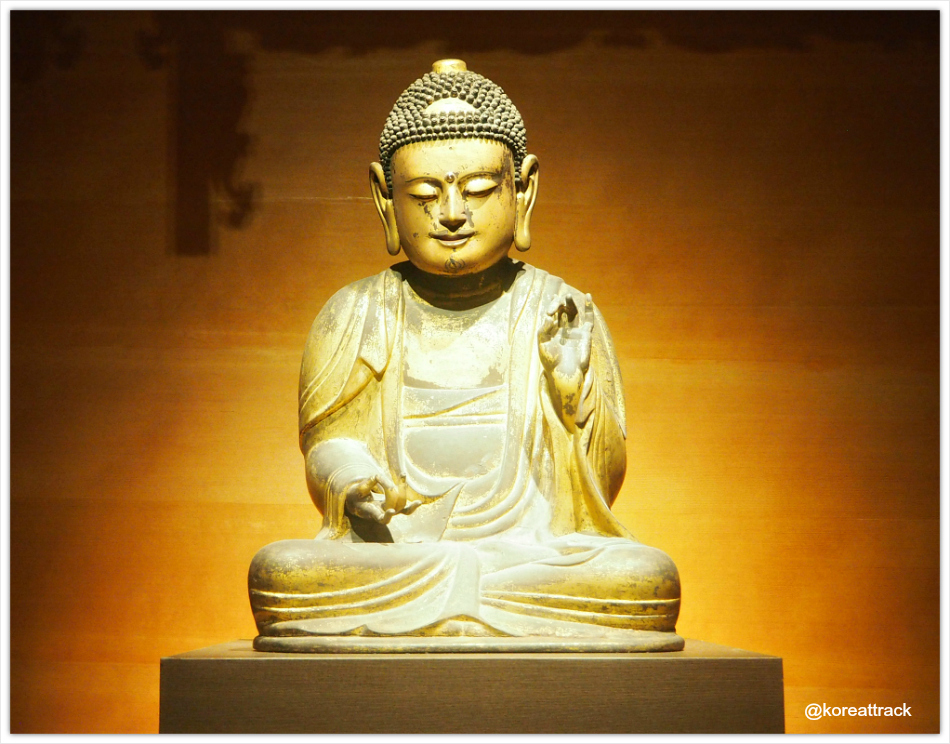
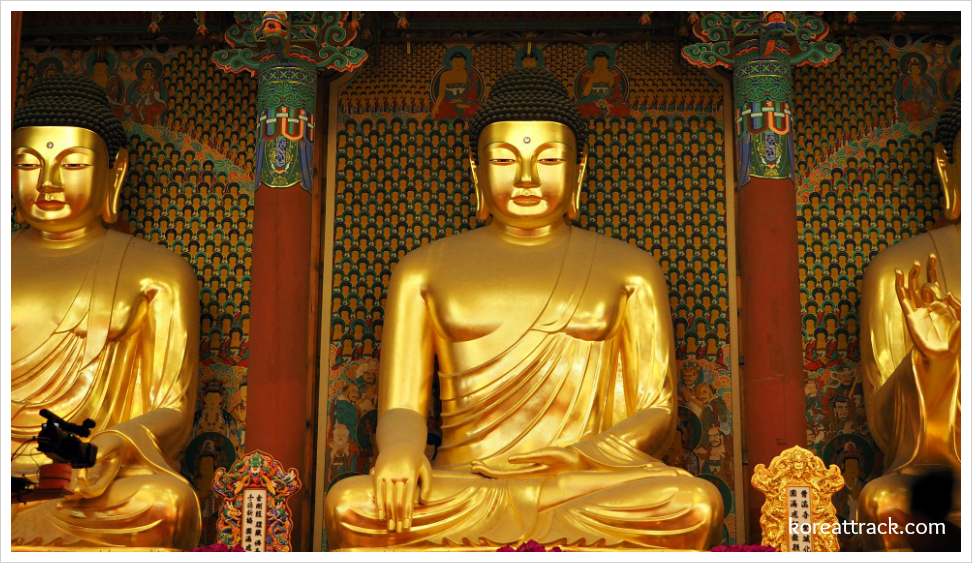
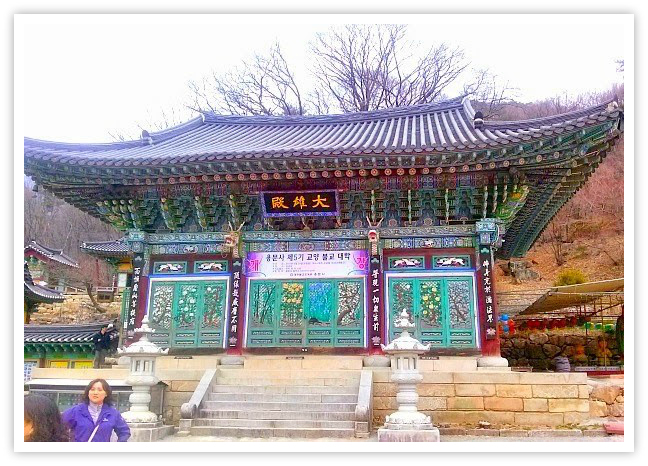




New! Comments
What do you think about this page? Leave me a comment in the box below.